How To Plant Basil Seeds: Perfect Step-by-Step Guide for Beginners
- February 23, 2024
- 0 comment
Basil, a fragrant herb beloved in cuisines around the world, offers not just culinary delights but also numerous health benefits. Growing basil at home is both rewarding and practical. In this guide, we’ll walk you through the process of planting basil seeds, nurturing the seedlings, and enjoying the lush, aromatic harvest.
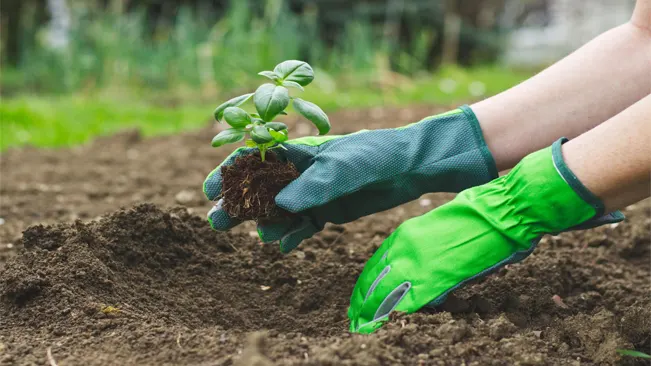
| Benefit | Description |
|---|---|
| Nutritional Value | Basil is rich in vitamins (A, K, and C), minerals (calcium, magnesium, iron), and antioxidants. |
| Supports Digestive Health | Basil can help with digestion and has been used to treat stomach spasms, loss of appetite, and intestinal gas. |
| Anti-inflammatory Properties | Contains compounds like eugenol which help reduce inflammation in the body. |
| Antibacterial and Antimicrobial | Essential oils in basil, such as eugenol, linalool, and citronellol, can inhibit the growth of bacteria, yeasts, and molds. |
| Heart Health | Basil can contribute to cardiovascular health through its antioxidants and magnesium content, supporting blood vessels. |
| Skin Health | Applied topically, basil can help treat skin infections due to its antibacterial properties. |
| Stress Reduction | Basil has adaptogenic properties, which help the body cope with different forms of stress. |
| Supports Liver Function | Basil can enhance the detoxification processes in the liver. |
| Enhances Mental Health | It has been suggested that basil can enhance mood and improve mental clarity and focus. |
| Supports Immune System | The antioxidants and essential oils in basil can help boost the immune system. |
Selecting Your Basil Seeds
Before you begin, choose the variety of basil you wish to grow. Sweet basil is common in Italian dishes, while Thai basil is a staple in Asian cuisine. There are also varieties like lemon basil and purple basil, each with a unique flavor and appearance.
Sweet Basil (Ocimum basilicum)
- Flavor and Use: This is the most common variety, known for its bright, sweet flavor. It’s a staple in Italian cuisine, perfect for pesto, tomato dishes, salads, and more.
- Growth and Care: Sweet basil plants grow lush and tall, often reaching up to 24 inches. They prefer warm weather and plenty of sunlight.

Thai Basil (Ocimum thyrsiflora)
- Flavor and Use: Thai basil has a spicier, licorice-like flavor compared to sweet basil. It’s essential in many Southeast Asian dishes, holding up better to cooking than sweet basil.
- Growth and Care: This variety is more robust against heat and less susceptible to wilting. Its leaves are narrower and often have a purple stem.
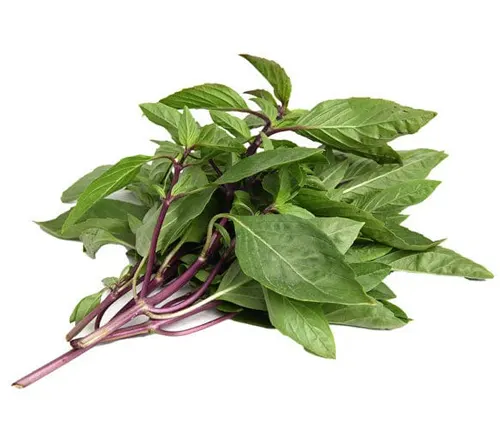
Lemon Basil (Ocimum citriodorum)
- Flavor and Use: As the name suggests, lemon basil has a lemony flavor, making it excellent for fish dishes, salads, and as a fragrant garnish.
- Growth and Care: It features light green, narrow leaves and a distinct lemon scent. Lemon basil prefers sunny conditions and regular watering.
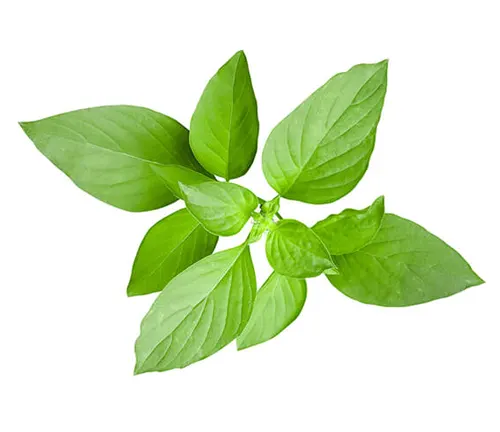
Purple Basil (Ocimum basilicum ‘Purpurascens)
- Flavor and Use: This variety is known for its striking dark purple leaves and a slightly stronger flavor than sweet basil. It’s great for adding color to salads and garnishes.
- Growth and Care: Purple basil can add aesthetic value to your garden. It requires similar growing conditions as sweet basil but may need more sunlight to maintain its vibrant color.
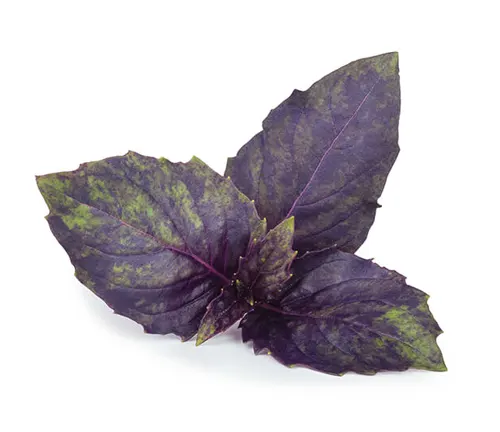
Genovese Basil
- Flavor and Use: A sub-variety of sweet basil, Genovese basil has large, dark green leaves and a slightly more pungent flavor. It’s another favorite for pesto.
- Growth and Care: Genovese basil thrives in warm, sunny environments and needs regular watering.
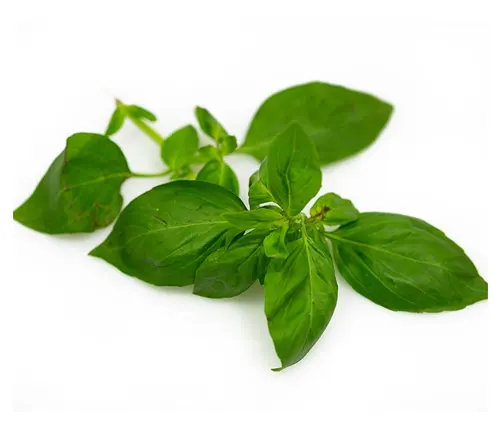
Preparing Your Planting Area
Basil loves the sun and requires well-drained soil. Whether you’re planting in a garden or in containers, ensure the location receives at least six hours of sunlight daily. Use high-quality potting soil for container planting.
Sunlight Requirements
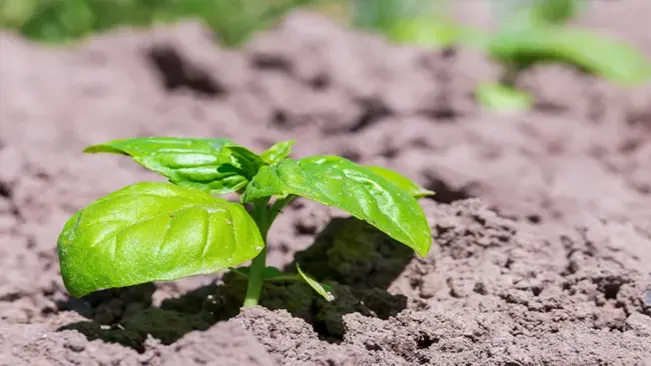
- Amount of Sunlight: Basil thrives in a location that receives at least six hours of sunlight daily. This is essential for the plant to grow strong and produce flavorful leaves.
- Sunlight Quality: Ensure that the area gets bright and direct sunlight. If you’re growing indoors, a south-facing window is often a good spot. For outdoor gardens, choose a spot that isn’t shaded by trees or buildings during the day.
Soil Requirements
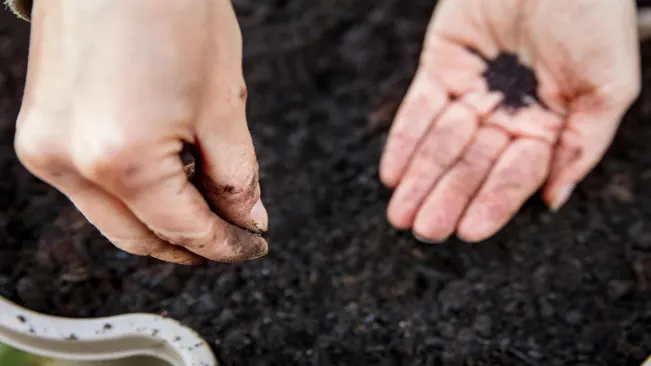
- Soil Type: Basil prefers well-drained soil. This means the soil should be loose and not compact, allowing water to drain through quickly. Heavy or clay soils can retain too much water, leading to root rot.
- Soil pH: Basil does best in soil with a pH ranging from 6.0 to 7.5. You can test your soil’s pH with a kit from a garden center. If the soil is too acidic or alkaline, you can amend it with lime or sulfur, respectively.
- Nutrients: Rich, fertile soil is ideal. If your soil is lacking in nutrients, consider amending it with organic matter like compost or well-rotted manure. This will provide the basil with necessary nutrients and improve soil structure.
Container Planting
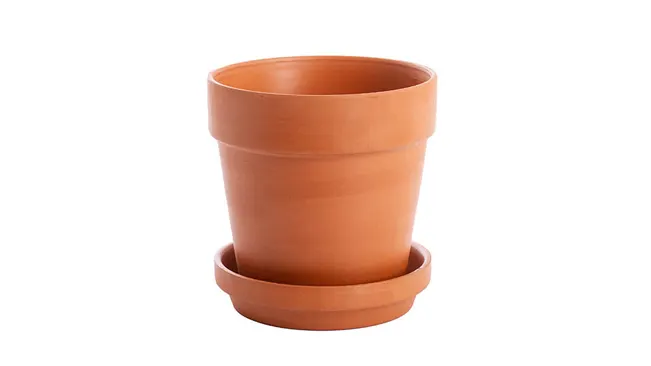
- Potting Soil: For containers, use high-quality potting soil. It’s specifically designed to be well-draining and nutrient-rich, perfect for herbs like basil.
- Container Size: Ensure the container is large enough to accommodate the basil’s root growth. A pot with a diameter of at least 12 inches is a good start.
- Drainage: Make sure the container has drainage holes at the bottom. This is crucial to prevent water from pooling at the base, which can cause root rot.
Preparing the Planting Area
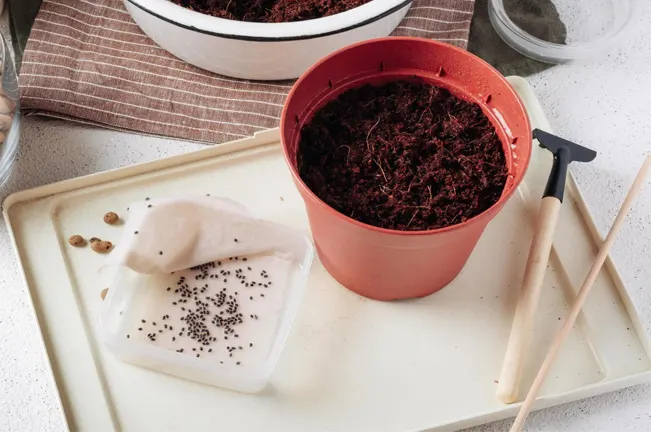
- Clearing the Area: Remove any weeds, stones, or debris from the planting area. Weeds can compete with basil for nutrients and water.
- Soil Preparation: Loosen the soil with a garden fork or tiller to about 12 inches deep. This helps improve aeration and drainage.
- Adding Amendments: If needed, mix in compost or other organic matter to enrich the soil.
Watering Considerations
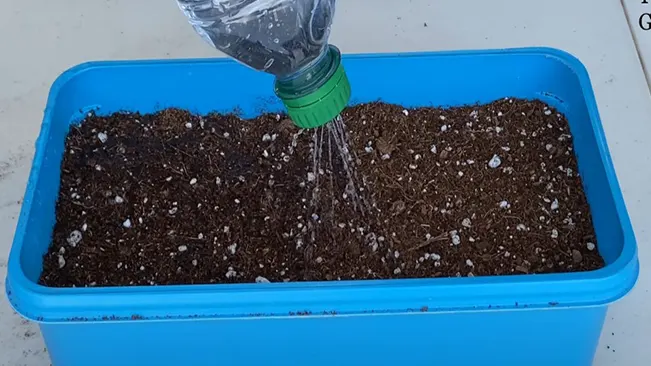
- Watering Needs: Basil needs consistent moisture, especially during hot, dry periods. However, it’s important not to overwater. The soil should feel moist but not soggy.
- Mulching: Applying a layer of mulch around the basil plants can help retain soil moisture and reduce weed growth.
Sowing the Seeds
Sow basil seeds after the last spring frost when the soil has warmed. Plant the seeds 1/4 inch deep, gently pressing them into the soil. If planting in containers, space the seeds a few inches apart. In garden beds, sow rows 12 to 18 inches apart.
Timing for Sowing Basil Seeds

- The ideal time to sow basil seeds is after the last frost of spring. This is because basil is a warm-weather herb that thrives in temperatures between 70°F and 80°F (21°C to 27°C).
- In regions with a short growing season, you can start the seeds indoors 4-6 weeks before the last expected frost, and then transplant them outdoors when the temperatures are consistently warm.
Soil Preparation

- Basil prefers well-drained, fertile soil with a pH between 6.0 and 7.5.
- If you’re planting in a garden, prepare the bed by loosening the soil and mixing in compost or a balanced organic fertilizer.
- For container planting, use a high-quality potting mix to ensure good drainage and aeration.
Planting Depth and Spacing
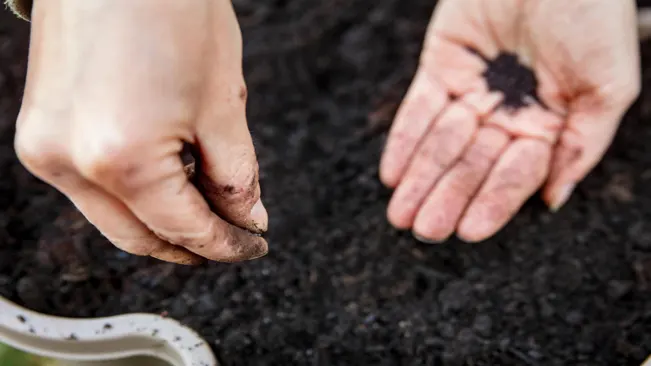
- Plant basil seeds at a depth of about 1/4 inch. This shallow planting depth allows them to receive enough light for germination while maintaining soil contact.
- Cover the seeds lightly with soil. Do not press down too hard, as basil seeds need some light to germinate.
- In containers, space the seeds a few inches apart. This spacing gives each seedling enough room to grow without overcrowding.
- In garden beds, sow seeds in rows that are 12 to 18 inches apart. This wider spacing allows for air circulation and easier access for watering and weeding.
Watering and Care Post-Sowing
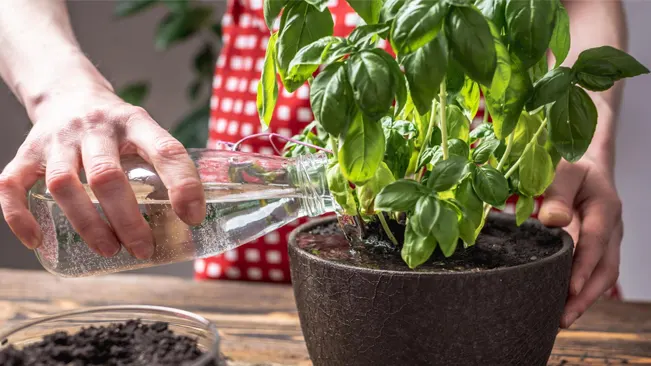
- After sowing, water the soil gently but thoroughly. Use a spray bottle or a watering can with a fine rose to avoid disturbing the seeds.
- Keep the soil consistently moist but not waterlogged. Basil seeds need moisture to germinate but can rot in overly soggy soil.
- If you’re starting the seeds indoors, consider using a heat mat to maintain a consistent soil temperature, which can enhance germination rates.
Germination

- Under ideal conditions, basil seeds usually germinate in 5 to 10 days.
- Once seedlings emerge, provide them with ample light. If growing indoors, a south-facing window or a grow light can ensure they receive enough light.
Thinning

- When seedlings have a few sets of true leaves (the leaves that appear after the initial seed leaves), thin them to stand about 6 to 8 inches apart. This process involves removing weaker seedlings to give the stronger ones more space to grow.
Watering and Germination
Watering Basil Seeds
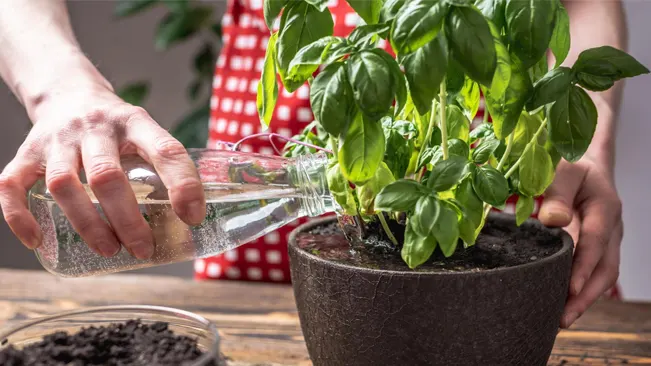
- Gentle Watering: It’s crucial to water basil seeds gently to prevent them from being washed away or buried too deeply in the soil, which can hinder germination. A soft spray or a watering can with a fine rose is ideal.
- Maintaining Moisture: Basil seeds need consistently moist soil to germinate effectively. The soil should feel like a wrung-out sponge – damp but not soggy. Over-watering can lead to waterlogging, which deprives the seeds of necessary oxygen, potentially causing rot.
- Frequency of Watering: The frequency depends on factors like soil type, weather, and whether you’re growing indoors or outdoors. Generally, watering once a day or every other day is sufficient, but you should adjust based on the soil’s moisture level.
Germination of Basil Seeds

- Time Frame: Basil seeds typically germinate within 5 to 10 days, but this can vary slightly depending on the variety of basil, the freshness of the seeds, and growing conditions.
- Temperature for Germination: Basil seeds germinate best at temperatures between 70°F and 80°F (21°C to 27°C). If you’re growing indoors, a heat mat can help maintain this optimal temperature range.
- Light Requirements: Once germination begins, basil seedlings need plenty of light. If you’re starting seeds indoors, place them near a sunny window or under grow lights. This will prevent the seedlings from becoming “leggy,” which means they stretch weakly towards the light.
- Using Covers for Humidity: If you’re starting basil seeds indoors, covering the seed tray with a plastic cover or using a propagation dome can help maintain the right humidity level. This mimics a greenhouse environment, providing the warm and moist conditions that basil seeds love for germination. Just remember to remove the cover once the seeds have sprouted to prevent mold growth and to acclimate the seedlings to less humid conditions.
- Transplanting Seedlings: Once the seedlings have a few sets of true leaves, they can be thinned out (if too close) and eventually transplanted into larger pots or into the garden. This should be done when the seedlings are strong enough to handle the transplant process.
Thinning Seedlings

- Once the seedlings are a few inches tall and have at least two sets of true leaves, thin them to stand about 6 to 8 inches apart. This ensures adequate space for each plant to grow.
Caring for Basil Plants
Regular watering is crucial, especially in hot, dry periods. Basil benefits from a balanced, water-soluble fertilizer applied every four to six weeks. Pinch off the tips regularly to encourage bushy growth and prevent flowering, which can alter the flavor.
- Watering Basil Plants
- Frequency and Amount: Basil plants require consistent moisture. The goal is to keep the soil uniformly moist but not soggy. During hot and dry periods, this might mean watering the plants once a day, especially if they are in containers. In-ground plants may require less frequent watering, depending on the soil and climate conditions.
- Method: When watering, aim for the base of the plant to avoid wetting the foliage, as this can encourage fungal diseases. Using a soaker hose or drip irrigation system for garden beds can be very effective.
- Fertilizing Basil
- Type of Fertilizer: A balanced, water-soluble fertilizer, typically one with equal parts nitrogen, phosphorus, and potassium (e.g., 10-10-10), is ideal for basil. Organic options like fish emulsion or compost tea are also beneficial.
- Frequency: Apply the fertilizer every four to six weeks during the growing season. Over-fertilizing can lead to lush foliage with less flavor, so it’s important to follow the recommended rates.
- Pruning and Pinching Basil
- Promoting Bushy Growth: Regularly pinching off the tips of the basil plant, especially when it reaches about 6 inches in height, encourages lateral growth, making the plant bushier. Use your fingers or a pair of scissors to pinch right above a leaf pair.
- Preventing Flowering: Once basil plants start to flower, the leaves can become bitter. To prevent this, pinch off any flower buds as soon as they appear. If the plant does flower, cutting back the plant can sometimes rejuvenate the flavor of the leaves.
- Soil and Sunlight Requirements
- Soil: Basil thrives in well-drained, nutrient-rich soil with a pH between 6.0 and 7.0. Adding organic matter like compost can improve soil health and drainage.
- Sunlight: Basil needs at least 6 to 8 hours of sunlight each day. If grown indoors, a sunny windowsill or a grow light may be necessary to provide enough light.
- Dealing with Pests and Diseases
- Common Pests: Aphids, spider mites, and whiteflies can attack basil. You can usually manage these pests by spraying the plants with water or using insecticidal soap.
- Diseases: Basil is susceptible to fungal diseases like powdery mildew, especially in humid conditions. Ensuring good air circulation around the plants and avoiding overhead watering can help prevent these issues.
Pests and Diseases
Watch out for common pests like aphids and slugs. A mild soap solution can help control aphids, while slug traps or barriers can manage slug issues. Basil can also be susceptible to fungal diseases, particularly in humid conditions. Good air circulation and avoiding overhead watering can help prevent this.
Pests Commonly Affecting Basil
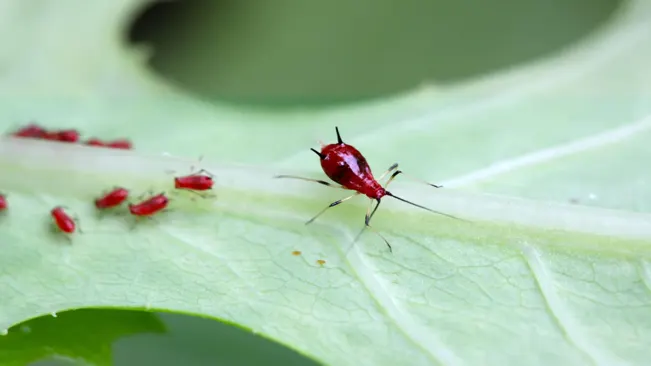
- Aphids: These small, soft-bodied insects cluster on the undersides of leaves, feeding on the plant’s sap. They can cause leaves to curl, wilt, or yellow and may stunt plant growth. Aphids also excrete a sticky substance known as honeydew, which can lead to sooty mold.Management: A mild soap solution or neem oil can be effective. Spray it directly on the aphids. Introducing beneficial insects like ladybugs, which feed on aphids, is a natural control method.
- Slugs and Snails: These pests are particularly fond of basil and can chew large holes in the leaves, especially during damp, cool nights.Management: Use slug traps or barriers. Diatomaceous earth, crushed eggshells, or copper tape can deter slugs and snails. Hand-picking them off at night can also be effective.
Diseases Commonly Affecting Basil
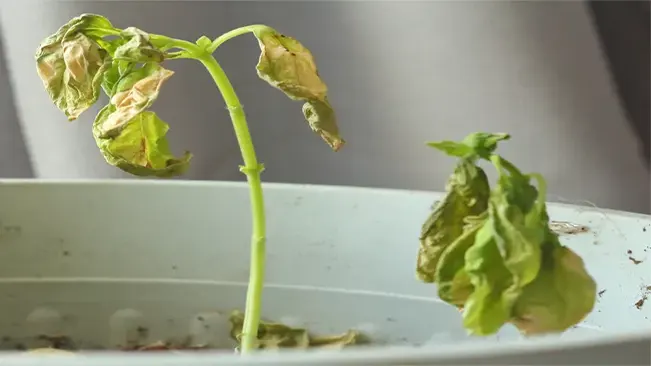
- Fungal Diseases: Basil is susceptible to several fungal diseases, especially in humid or overly wet conditions. Common fungal issues include fusarium wilt, gray mold (botrytis), and powdery mildew.
- Fusarium Wilt: Causes yellowing and wilting of leaves, starting typically at the base of the plant. It’s a soil-borne fungus, and infected plants usually need to be removed and destroyed.
- Gray Mold (Botrytis): Appears as gray, fuzzy spots on leaves and stems. It thrives in cool, wet conditions.
- Powdery Mildew: Shows up as white, powdery spots on leaves. It can spread rapidly if not controlled.
Preventive Measures
- Good Plant Hygiene: Regularly remove any fallen or dead plant material around your basil. This can reduce the habitat for pests and the spread of disease.
- Proper Watering Practices: Water at the base of the plant to avoid wetting the foliage. Early morning is the best time to water, as it allows leaves to dry out during the day.
- Adequate Spacing: When planting basil, ensure adequate space between plants. This improves air circulation, reducing the risk of fungal diseases.
Harvesting Basil
Begin harvesting when the basil plants are about 6 inches tall. Pick leaves regularly to encourage new growth, but never remove more than a third of the plant at a time. For the freshest flavor, harvest basil leaves in the morning.
When to Start Harvesting
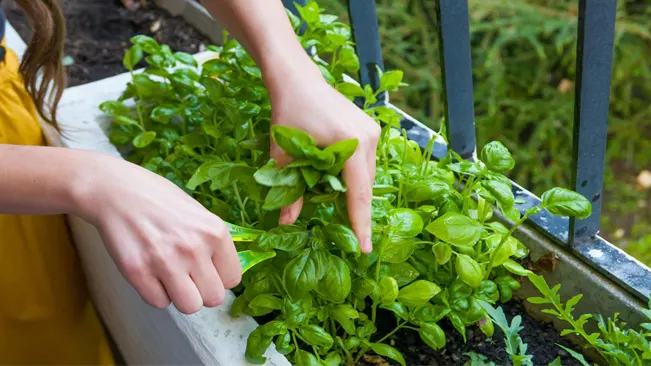
- Plant Size: Begin harvesting your basil plants when they have reached about 6 inches in height. This height usually indicates the plant is mature enough to withstand harvesting without being damaged.
- Leaf Size: Another indicator is the size of the leaves. Look for leaves that are large enough to use in your cooking. They should be bright green and unblemished.
How to Harvest
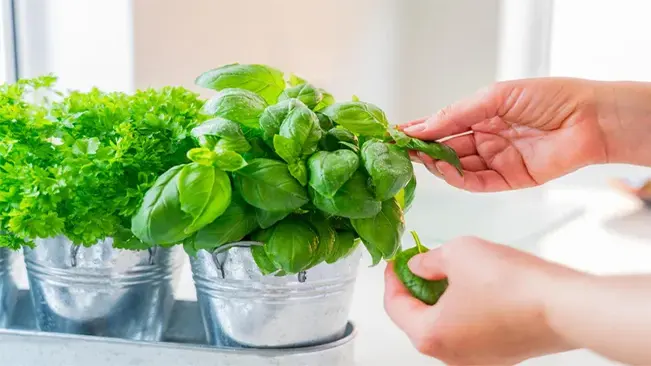
- Pick Leaves Regularly: Regular picking encourages the plant to become bushier and produce more leaves. It’s a way of pruning the plant and stimulating new growth.
- Method of Picking: Use your fingers or a pair of scissors to gently pinch off the leaves or the top set of leaves right above a pair of growing leaves. This method encourages the plant to branch from the point of cutting.
- Amount to Harvest: Be cautious not to over-harvest. A good rule of thumb is to never take more than one-third of the plant’s total foliage at a time. This ensures that the plant has enough leaves to continue photosynthesizing and growing.
- Harvesting from the Top: Start picking leaves from the top of the plant. This helps to keep the plant from getting leggy and encourages it to grow more leaves from the sides.
Best Time for Harvesting
- Morning Harvest: For the freshest flavor, harvest basil leaves in the morning, after the dew has dried but before the sun gets too hot. This is when the plant’s oils are most concentrated, providing the best flavor and aroma.
Post-Harvest Care

- Watering: After harvesting, ensure the plant continues to get adequate water, particularly if it’s in a container.
- Fertilizing: If you’re harvesting regularly, consider giving your basil a light fertilizer to help replenish nutrients.
- Pruning Flower Buds: If you notice flower buds forming, pinch them off. Flowering can cause the leaves to lose some of their flavorful oils and can signal the plant to stop producing new leaves.
Using Harvested Basil

- Immediate Use: Fresh basil leaves are a wonderful addition to many dishes, including salads, pasta, and pizzas.
- Storing: If you’re not using the leaves right away, store them in a damp paper towel in the refrigerator, or place the stems in a glass of water like a bouquet.
- Preserving: For long-term storage, basil can be dried or frozen. Freezing preserves more of the flavor than drying.
Conclusion
Planting basil seeds is a rewarding and straightforward process. Start by selecting a sunny spot and well-drained soil, sow the seeds after the last frost, and keep the soil moist for germination. As the seedlings grow, thin them out and ensure regular watering and occasional fertilization. With proper care, your basil plants will thrive, providing a fresh supply of aromatic leaves for your culinary creations.
FAQs (Frequently Asked Questions)
- What is the best time to plant basil seeds?
Basil seeds should be planted after the last spring frost when the soil has warmed up. This is typically in late spring or early summer, depending on your climate zone. - How deep should I plant basil seeds?
Basil seeds should be planted about 1/4 inch deep in the soil. - How much sunlight does basil need?
Basil thrives in full sun, requiring at least six hours of sunlight each day. - What type of soil is best for basil?
Basil prefers well-drained soil that is rich in organic matter. A pH between 6.0 and 7.0 is ideal. - How often should I water basil?
Basil needs to be kept moist, especially during dry spells. Water the plants when the top inch of soil feels dry to the touch. Avoid over-watering as this can lead to root rot. - Do I need to fertilize basil?
While basil isn’t particularly demanding, feeding it with a balanced, water-soluble fertilizer every 4-6 weeks can promote healthier growth, especially if you’re harvesting leaves regularly. - How far apart should I space basil seeds?
Plant basil seeds a few inches apart if you’re planting in containers. In garden beds, sow rows 12 to 18 inches apart. - When can I start harvesting basil leaves?
You can start harvesting when your basil plants are about 6 inches tall. Regular harvesting encourages the plant to grow fuller and produce more leaves. - How do I prevent my basil from flowering?
Pinch off the tips of the plant, including any small flower buds, to encourage bushy growth and prevent flowering. Flowering can reduce the flavor of the leaves. - Can basil be grown indoors?
Yes, basil can be successfully grown indoors. Ensure it has plenty of sunlight (a south-facing window is ideal) or use a grow light. Keep the soil consistently moist and provide adequate drainage.
With these steps, you’re ready to grow vibrant basil. Start today and savor the fresh flavors soon!

Kristine Moore
Forestry AuthorI'm Kristine Moore, a seasoned garden landscaping professional with over 30 years of experience. My extensive career has been dedicated to transforming outdoor spaces into stunning, sustainable landscapes. With a deep understanding of horticulture, design principles, and environmental stewardship, I have become a respected figure in the field, known for creating harmonious, visually appealing, and eco-friendly gardens. My commitment to excellence and continuous learning in landscaping trends and techniques has solidified my reputation as an expert in garden design and implementation.


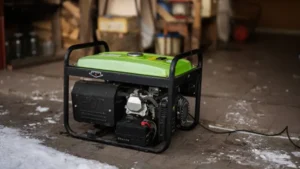
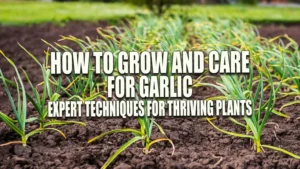

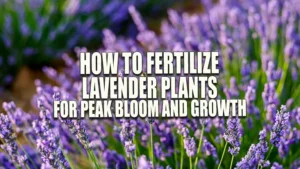

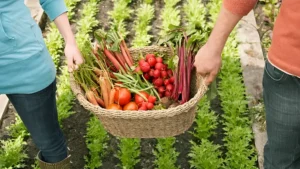



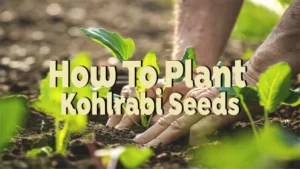

Leave your comment